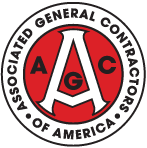Construction professionals need to know how to balance the contingencies of risk with their specific contractual, financial, operational and organizational requirements. In order to achieve this balance, proper risk identification and risk analysis is required. The risk management process entails identifying construction risks and exposures, and formulating an effective risk management strategy to mitigate the potential for loss.
Many construction professionals look at risks individually with a myopic lens and do not realize the potential impact that other associated risks may have on their business operations. Using a holistic risk management approach will enable a firm to identify all of the organization's business risks. This will increase the probability of risk mitigation, with the ultimate goal of total risk elimination.
The Construction Risk area includes sections on Construction Risks & Exposures, Construction Defect Mitigation, with subsections on CD Problem Areas, CD Claims & Litigation, EIFS, and California and Colorado CD Law. The Construction Risk area also includes sections on Risk Management Strategies, Risk Transfer and Risk Financing.
Risk Transfer & Indemnification
The two most problematic areas for construction professionals to effectively manage are contractual risks and the insurability of projects. Contract reviews and insurance facilitation are critical components on an effective risk mitigation and management program. Insurance facilitation assumes the probability that accidents will occur and seeks an efficient way of distributing and/or transferring the risk.
In many instances the ultimate loss is transferred to the insurer, using conventional insurance as the risk transfer method. In other instances, the use of contractual risk transfer methods, utilizing indemnification provisions, are used. However, in most cases, the combination of insurance, risk financing, and contract indemnification provisions are used.
Indemnification can be viewed from the perspective of worker safety and avoidance of accidents, with an emphasis on the exculpatory aspects of indemnification. However, sometimes escaping liability and the associated consequences can create problems with the misuse of indemnification provisions. Particularly, with the broad form or intermediate form, which can exculpate the indemnitee from his/her own wrongdoing or negligence.
Problems with indemnification provisions can occur, for example, if a prime contractor removes the indemnification provision from all of its subcontract agreements. This minimizes the prime contractor's responsibility, and could minimize the incentive for the prime contractor to properly control project operations. This could also increase the potential for injuries to workers at the project jobsite.
Construction professionals should be aware that contract indemnification provisions are statutory. They require legal interpretation from the appropriate legal counsel with knowledge of indemnification statutes for the client's specific geographical area, or where the proposed construction project under consideration will be built.
Statutes differ from State to State, and Regulators in each state have very diverse viewpoints regarding contract indemnification provisions. Many State Regulators do not view indemnification as a method of reassuring a nervous contract drafter, obtaining insurance at the best price, or placing the risk on the party in the contract that can avoid injuries or damages most economically.
Regulators approach their review with a David & Goliath type of measuring stick. They review contract indemnification provisions primarily from an exculpatory aspect, i.e., the means by which the stronger party obtains indemnification from the weaker party. A review of contract case law on indemnification provisions would indicate that a similar metric is used in many jury verdicts.
The information provided on indemnification is intended for general information purposes only and does not constitute, nor is it intended to constitute, legal advice. You should always consult with legal counsel to determine how the specific laws or decisions on indemnification or contractual liability apply in your specific circumstances.










